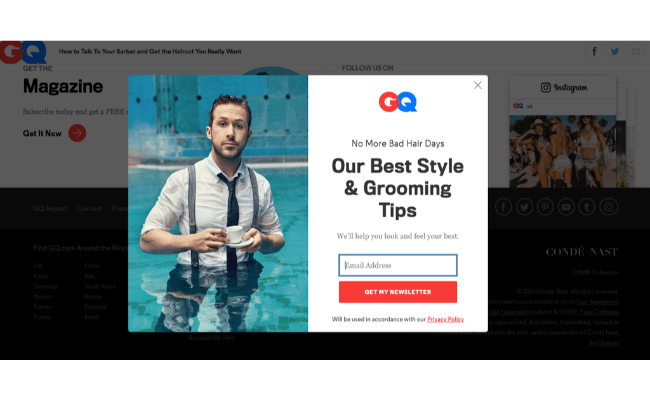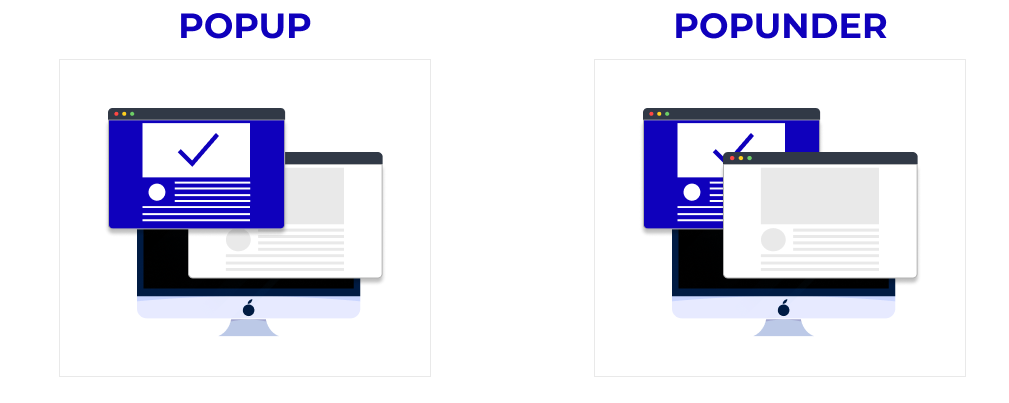
Pop-under ads, a form of online advertisement that opens in a new window behind the current browser, can play a valuable role in digital marketing strategies. Although less intrusive than pop-ups, they offer unique advantages for capturing user attention and driving engagement. This article explores the role of pop-under ads in digital marketing and how to leverage them effectively.

Role of Pop-Under Ads
Understanding Pop-Under Ads
Pop-under ads appear behind the primary browser window, becoming visible when the user closes or minimizes their current window. Unlike pop-ups, which can immediately interrupt the browsing experience, pop-unders are less intrusive and allow users to interact with their current content before noticing the ad.
Moreover, pop-unders can capture the attention of users who are already engaged in their browsing activities. Understanding their functionality and benefits helps in integrating them effectively into digital marketing strategies.
Advantages of Pop-Under Ads
1. Less Intrusive
Pop-under ads are less disruptive compared to pop-ups, which can be immediately annoying to users. This non-intrusive nature makes pop-unders a more acceptable form of advertising, leading to better user experience.
Additionally, since pop-unders do not interrupt the user’s current task, they are more likely to be viewed when users close or minimize their browser windows, making them a less intrusive advertising option.
2. High Visibility
Pop-under ads can achieve high visibility as they appear behind the active window and become visible when users interact with their browser. This delayed visibility can result in users noticing the ad after their primary task is complete.
Furthermore, the persistent nature of pop-unders means they remain visible until the user closes or minimizes their current window, potentially leading to increased brand exposure and recognition.
3. Increased Click-Through Rates
Due to their visibility when users close or minimize their windows, pop-under ads often experience higher click-through rates (CTR) compared to more intrusive ad formats. This is because users are more likely to notice and engage with the ad when their primary focus is no longer on their current activity.
Additionally, the non-intrusive nature of pop-unders can contribute to higher user engagement, as users are not immediately pressured or interrupted by the ad.
Integrating Pop-Under Ads into Digital Marketing Strategies
1. Target the Right Audience
Effective targeting is essential for maximizing the impact of pop-under ads. Use data-driven insights to reach users who are most likely to be interested in your products or services.
Moreover, employ retargeting strategies to engage users who have previously interacted with your brand or visited your website. Targeted pop-under ads ensure that your message reaches a relevant audience, increasing the likelihood of engagement and conversion.
2. Design Engaging Ad Content
Crafting engaging ad content is crucial for the success of pop-under ads. Focus on creating a compelling headline and persuasive copy that highlights the benefits of your offering.
Additionally, use strong visuals and clear calls to action (CTAs) to capture attention and drive user interaction. Effective ad design ensures that your pop-under ad stands out and motivates users to take the desired action.
3. Optimize for User Experience
Although pop-under ads are less intrusive, optimizing them for a positive user experience is still important. Ensure that the ad’s content and design are relevant and valuable to your target audience.
Moreover, avoid overloading the ad with excessive information or complex layouts. A simple, clear, and user-friendly ad enhances engagement and reduces the risk of user frustration.
4. Monitor and Analyze Performance
Regular monitoring and analysis of pop-under ad performance are crucial for optimizing their effectiveness. Track key metrics such as click-through rates, conversion rates, and user interactions to evaluate the ad’s impact.
Additionally, gather feedback and insights to understand how users respond to your ads. Performance analysis helps identify successful strategies and areas for improvement, allowing you to refine your approach and enhance results.
Best Practices for Using Pop-Under Ads
- Avoid Overuse: Excessive pop-under ads can lead to user frustration and decreased engagement. Balance the frequency and placement of ads to maintain a positive user experience.
- Adhere to Guidelines: Ensure that your pop-under ads comply with industry standards and best practices to avoid being perceived as spammy or intrusive.
- Test Different Variations: Conduct A/B testing on different ad elements such as headlines, visuals, and CTAs to determine what works best for your audience.
- Optimize for Devices: Design pop-under ads to be responsive and optimized for both mobile and desktop platforms to reach users effectively across different devices.
Conclusion
Pop-under ads play a significant role in digital marketing strategies by offering a less intrusive way to capture user attention and drive engagement. By targeting the right audience, designing compelling content, optimizing user experience, and monitoring performance, marketers can effectively leverage pop-under ads to achieve their marketing goals. Implementing best practices ensures that pop-under ads contribute positively to your overall digital marketing efforts and enhance user interaction with your brand.
